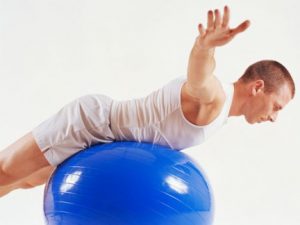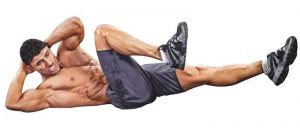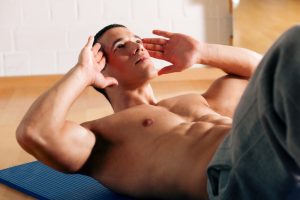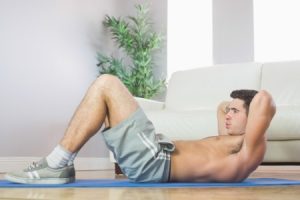Haemophilia & Exercise
Haemophilia, Fitness & Exercise
Fitness & Exercise
Activity isn’t something to shy away from: in fact, it’s an important part of living well with hemophilia. By choosing the right kinds of activity with the right safety measures in place, exercise can benefit a person both physically, and mentally.
THE MANY BENEFITS OF PHYSICAL ACTIVITY
The benefits of exercise to people with hemophilia are much the same as for those without the condition. It helps people maintain a healthy weight, promotes endurance, and helps keeps muscles strong. The added benefits in hemophilia are that a strong body helps protect it from bleeds – which is why regular exercise is a vital part of managing the condition.
| THE BENEFITS OF EXERCISE: BODY, MIND, AND SPIRIT | |
| Physical | |
| Strong and flexible muscles | Strong and flexible muscles support the joints, which helps prevent bleeds and joint damage. |
| Overall fitness | Feeling fit and having energy helps reduce fatigue. |
| Maintaining a healthy weight | Being at a healthy weight reduces the stress placed on the joints, which is especially important as a person ages. |
| Improves balance and coordination | Improved balance and coordination helps joints and muscles work better together, which in turn, help protect them from bleeds. |
| Psychological and social | |
| Improvedwell-being | Sweating it out is a great outlet to help relieve stress, and relax the mind. |
| Self-esteem, confidence and FUN! | It’s fun to be active – for kids and adults! Playing sports, or doing any regular exercise, can boost self-esteem, promote social acceptance and provide a peer group to bond with. |
CHOOSING THE RIGHT ACTIVITIES
While exercise and sports have many benefits for people with hemophilia, it’s important to choose activities wisely. Some high-impact activities are still considered too risky because of the higher risk of serious bleeding. Be sure to talk to your doctor and care team about what activities are best for you or your loved one. A physiotherapist experienced in working with hemophilia can also help develop an appropriate exercise program.
The World Federation of Hemophilia has put together a list of the top activities recommended by doctors who care for hemophilia patients, and the ones to avoid. You may find it to be a useful guide in choosing activities. Always talk to your doctor before starting a new activity or sport.
| Top 10 Activities Recommended by Doctors | Top 10 Riskiest Sports |
|
|
Adapted from Growing up with Hemophilia: Four Articles on Childhood; World Federation of Hemophilia, Dr. Peter Jones, 1994.
CHOOSING AN ACTIVITY FOR YOUR CHILD
When choosing an activity for your child, consider the following:
- What benefits are you seeking? Are they strictly physical, or social? Is your child competitive? How can you meet your child’s goals in a safe manner?
- Is it an activity you can do as a family? Doing activities together can help parents more closely supervise and monitor their child.
- Does your child have a ‘target’ joint? A target joint is one that has suffered repeated bleeds. Ensure it is safely protected during activities (e.g., with a brace or appropriate footwear).
- Are there sports to avoid for a target elbow, ankle or knee joint? Racquet sports with lots of start-and-stop motion can place these joints at a higher risk of bleeds, so should be avoided.
- When should infusions be given around activity? If your child is on prophylaxis therapy, talk to your HTC team about when to schedule infusions (e.g., before a sports practice).
- Does your child have well-developed reflexes and co-ordination? If your child is young and still developing these skills, they are at a greater risk for a fall or injury. Talk to your HTC physiotherapist about activities that may be more suitable, and exercises that can help improve reflexes.
- What is the speed and potential body contact involved in the activity? The higher the speed, and potential for contact (e.g., football, rugby, hockey), the greater the risk for injury and bleeds. Have a frank talk with your child about the potential risks, and whether they can find enjoyment in another, safer sport.
Adapted from All About Hemophilia: A Guide for Families, Chapter 12: Physical Activity, Exercise and Sports.
CHOOSING AN ACTIVITY AS AN OLDER ADULT
As people with hemophilia age, their risk for joint damage increases. As a result, they may experience chronic pain and have reduced mobility and range of motion. Yet, it’s still important to remain active to help strengthen joints and muscles, maintain a healthy weight, and provide an outlet for any stress or tension.
Choose activities that ‘go easy’ on the joints. Since knees, elbow and ankles are often affected by joint damage, activities like jogging, basketball, or soccer are not ideal. Instead, consider these:
- Walking
- Swimming
- Yoga or pilates
- Cycling
- Strength (weight-bearing) exercise. If you’re unsure how to get started, ask a friend or someone at your local gym.
- If you want to change it up – throw in a dance class or a game of bowling!
For you or your child, exercise is all about choosing wisely, taking precautions, and having FUN! Your doctor or physiotherapist can help you select the right activities, and help adjust the infusion schedule, if needed.
Source: Bayer
http://livingwithhemophilia.ca/managing/fitness-exercise.php









